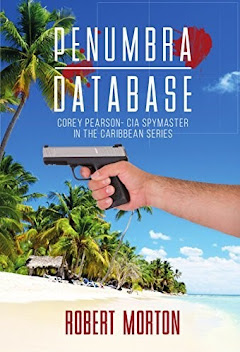 |
| From Bond to Real Life: Spy Gadgets That Actually Existed- and Killed |
Ever see one of those James Bond gadgets
and think, “C’mon, that can’t be real”? Like an invisible car, a laser-blasting
watch, or a pen that fires poison darts—cool as hell, but total movie magic,
right?
Well… not exactly.
The real spy world has had gear so insane,
it feels like it was ripped straight out of a Hollywood script. But these
weren’t movie props—they were the real deal. Built to kill, snoop, and
disappear without a trace. Some sound downright goofy (hello, gun-in-a-glove),
but others? Straight-up lethal. Take the infamous Bulgarian umbrella—which was
absolutely not designed to keep you dry.
Let’s start there, because yes, that
umbrella actually killed someone. In 1978, Bulgarian journalist Georgi Markov
was waiting for a bus in London when someone tapped him in the leg with an
umbrella. Seemed harmless—until he was dead three days later from a ricin
pellet fired into his thigh. You don’t get more Cold War than that.
And that very same umbrella pops up in the
spy thriller novel Shadow
War. In one high-stakes scene set in
Havana, Cuba, CIA spymaster Corey Pearson is preparing to assassinate a Russian
oligarch who’s been hunting Americans. He casually unzips a satchel and pulls
out—you guessed it—a modernized Bulgarian umbrella. Looks like something you'd
use on a rainy day in D.C., but this version has a compressed-air trigger in
the handle and fires a ricin pellet silently from 20 feet. It’s a brutal
callback to Cold War ingenuity—and proof that some tools never go out of style,
they just get upgrades.
And sure, most of us won’t be pulling off
silent hits in Havana, but who wouldn’t want an umbrella that does more than
just turn inside out in the wind?
Let’s look at a few more real-world
gadgets that make Bond’s gear seem... honestly, pretty tame.
Camera Bras: Yes,
they existed. Perfect for female operatives needing to snap photos unnoticed—no
need for bulky gear or awkward angles. Okay, maybe not a fit for your next
vacation to Disney World, but imagine the selfies.
Cigarette Guns: KGB
agents actually carried these. Just one bullet, fired from a cigarette that
looked completely normal. Not ideal for chain-smokers, but if you were ever
trapped in a Cold War alleyway, it was your ticket out.
Soap Dish Film Destroyers: One
of the more genius designs—film wrapped around a bulb inside what looked like a
soap container. If someone unauthorized opened it, the bulb would flash and
destroy the film. Because if you were going to get caught, you sure as hell
weren’t going to let them see what you’d found.
Lipstick Pistols:
Nicknamed the “kiss of death,” these Soviet inventions were as stylish as they
were deadly. Perfect for tight spaces—or tight dresses.
Glove Guns:
These were issued to American code breakers during WWII in case German soldiers
breached their cipher rooms. Make a fist, punch someone, gun fires. Not the
most subtle handshake, but definitely effective.
These days, collectors go after this spy
gear like it’s pirate gold. Some have risked shady meetups, smuggled hollow
coins in their mouths, even sweet-talked former KGB agents into handing over
their gadgets. One of the biggest collections—over 8,000 pieces—is at the
International Spy Museum in D.C. And yes, they’ve got a Bulgarian umbrella. I
mean, how could they not?
That’s the wild thing: gadgets we once
thought were pure fiction were actually field-tested, dangerous as hell, and in
some cases, still in use. The movie magic came after the real blood was
spilled.
So next time you laugh at Bond’s exploding
toothpaste or Batman’s grappling gun, just remember—somewhere, sometime, a real
spy probably used something even weirder.
And if you want to see that lethal
ingenuity brought into the 21st century, Shadow War delivers.
Just don’t expect Corey Pearson to hand over his umbrella.
Robert
Morton is a member of the Association of Former Intelligence
Officers (AFIO) and writes about the U.S. Intelligence Community (IC). He also
writes the Corey
Pearson- CIA Spymaster Series, which blends his knowledge of real-life
intelligence operations with gripping fictional storytelling. His thrillers
reveal the shadowy world of covert missions and betrayal with striking realism.






No comments:
Post a Comment